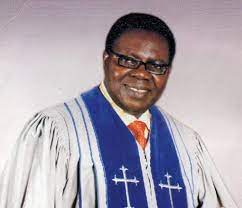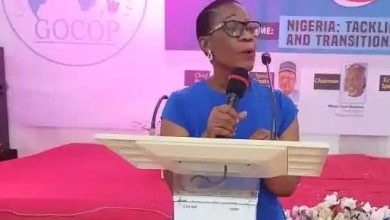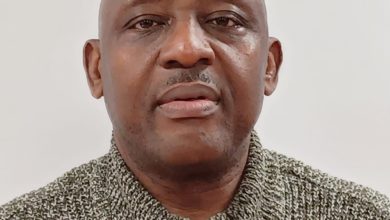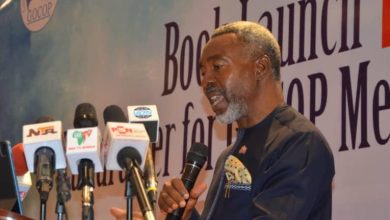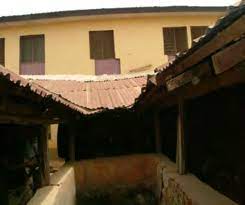
For the record: Risawe’s Palace, Ilesa Nigeria: Traditional Yoruba Architecture as Socio-Cultural and Religious Symbols
Abstract
This paper is a situational report of the present position of Risawe’s Chieftaincy palace; one of the chiefs’ palaces in Ilesa town, Nigeria, an extant building of the 21st century.
This paper identifies the paramount place of culture and traditions as the basis of Yoruba architectural plan, design and construction. It examines the importance and functions of the courtyard style of traditional Yoruba architecture in socio-cultural and religious
context. The significance of the chieftaincy palaces in general is also discussed.
The paper therefore, focuses on the ancient Yoruba architectural creativity and functionality. The effects of modernization are also mentioned. Data for the paper were collected through field work, oral interviews and published literature. The paper concludes that traditional architecture should be maintained, preserved and sustained as legacy for the generation to come.
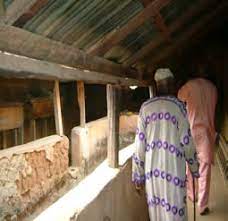
Introduction
Yoruba people are Negroid stock of sub-Saharan West Africa. They are homogenous in culture, religion (the belief in Olodumare) and language though with variants of dialect. They spread over the South Western part of Nigeria and the neighbouring Benin Republic (formerly Dahomey). They are the second largest linguistic group next to Hausa of the northern Nigeria. Oduduwa Olofin was believed to be the progenitor of the Yoruba race (Fadipe 1991).
They are predominantly farmers but other economic activities prevailed such as merchandise, craft, hunting, music, and priesthood to mention a few. Since they are farmers and craftsmen, they built permanent dwellings that attend to their immediate needs unlike the nomadic Fulani. Ilesa town is about 32 kilometers northeast of Ile Ife in Osun State, Nigeria. It lies around the upper reaches of the Osun, Shasha and Oni rivers which flow south and south-west to the Lagos lagoon, some hundreds miles away
The annual rainfall is heavy occurring mostly from late March to early November and at its peak in June and September. Its location in the forest, but adjacent to the Savannah, has been the most important geographical parameter of Ijesha history. Though, there is evidence that
human settlement in some parts of the deep rain forest to the south is ancient
Present day Ilesa is more or less situated in the centre of two Ijesha Divisions now called Obokun and Atakumosa Local Government Areas. There are many versions of its historical background but by and large, one thing is constant and this is the fact that all Yoruba kingdom took their source or foundation from Ile Ife. According to oral tradition, present
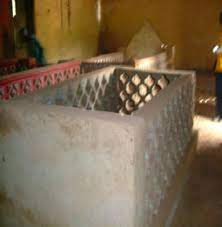
Ilesa was founded about 700 years ago by Obokun, Owa’s ancestors. Obokun was the youngest son of Oduduwa Olofin who volunteered and successfully brought healing sea water that cured his father blindness because his father was suffering from eyes problem. On his return, his elder brothers had gone away with their father’s crowns but he was given the Ida ajase (conquest sword) which he used to conquer his enemies. He returned to Ile Ife on the death of his father to perform his father’s burial rites. From this version, the Ijesas today believe that their patrimony begins from the Ooni’s palace square known as Enuwa (Owa’s approach) Ile Ife. In another version writes that Ilesas of today are emigrants.
According to him, the Ilesa site of today was already occupied by scattered settlement of an aboriginal population, the most important being identified as Okesa and Ijoka, which are in existence till today. Johnson, (1921) also buttresses this fact, in his version that the Ijesa were from the neighbourhood of Ibokun who first migrated to Ipole near Ondo and later returned to Ilesa where they met the aboriginal inhabitants. They spared the principal chief who had an extensive Okra plantation. He was called Oba Ila; Okra king, from his okra plantation, and he was placed next in rank of the marauders chief (Owa).
Amongst the strangers that later became part and parcel of them today were from places like Benin, Oyo, Ado-Ekiti, Ora, Ondo, Ikole-Ekiti, Aramoko, Akure and Efon-Alaye; all with lineage titles. Most of their oriki; cognomens trace their source (Risawe, 26th febraury, 2007).
Traditional Yoruba Palaces
In an attempt to secure a place that is environmentally friendly and highly resilient, early man retreated into the protective warmth of cave (away from wild animals and unfavourable weather condition). From this natural home emanated the more comfortable buildings of the modern days. Amongst the buildings developed are palaces, shrines, markets, personal dwellings and places for social interaction.
According to (Denyer, 1978:3) traditional African Architecture is primarily a personal adaptation to a group solution. Every society has its own typical style of building which has been handed over from one generation to the other all in solving the immediate problem of
habitation.
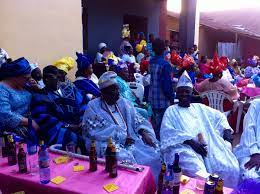
Ilesa is not exempted from this fact, in order to solve problem of habitation, they build houses that are functional and at the same time tell more about their social status hence, the construction of Aafin (Palace). What is a palace? According to Longman Dictionary of Contemporary English (1978), a palace is a large grand house where a ruling king or queen
or a Bishop or Archbishop officially lives. Palace in Yoruba land is the royal residential area reserved for nobody other than the ruling king. Ojo, (1968) simply defined palace as exclusively official residence of an Oba.
It is characterized by multiple housing units enclosed with courtyards. Krapf- Askari (1969) also describes Aafin as multiple compounds because of the various courtyards that characterized it. Generally, the front of the Yoruba palaces laid the open space for economic activities. The situation of market in palace frontage is symbolical. Blier, (1998) attests to the fact that market is located at the front of Owa’s Palace in Ilesa, because of the role that the king assumed as the overseer of the economic activities of his people.
This also gives Owa and his household a stress free access to their domestic needs, which they do not normally pay for. In most Yoruba towns and villages the Oba market is used as the town assembly ground where public meetings and social activities like coronation of chiefs are held. But on the contrary, coronation of chiefs in Ilesa is not done in the market place but in Ara Ilu spot within the palace.
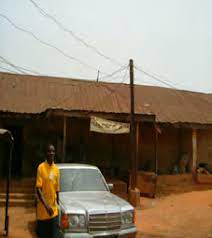
The Ilesa palace is relatively large and situated at the center of the town, According to Peel, (2002) the palace is set within its rectangular 51-acre ground and surrounded by a high mud-brick wall towering above any other building in the town. Within the palace wall there exist judicial and political center of the kingdom, a portion for royal ancestors and the most potent
shrines of the gods. Artistic representations abound in the palace; examples are the pillar posts in form of equestrian figures, kneeling figures and some genre in relief panels. All these are the features of most Yoruba traditional palace architectures.
There is only one Aafin in any given Yoruba town in the past but this has changed as a result of population, frequent wars, exposure and quest for supremacy. The idea of proliferation of traditional palaces is prominent among the Egba and the Ijebu of Ogun State, Nigeria. Ojo (1966) remarks, that the two kingdoms had been unstable unlike those of Ife and Oyo kingdoms, which are the best representations of Yoruba towns. Palace as used in ‘Risawe’s Palace’ which is under discussion is definitely not the type of palace obtainable in Egba and Ijebu kingdoms but used rather in Ilesa town to describe chief’s compounds that are distinguished with multiple courtyards.

The Meaning and Importance of Risawe’s Title
The political structure of Ijesaland becomes imperative in this study. Risawe and nine other high chiefs hold important positions in Ijesaland and this gives each of them the right to have a palace from where they rule subjects under immediate domain. The political strength of Ijesaland centers on the chieftaincy titleholders with different ministerial posts.
Their duties are to see to the affairs of their lineages and the community at large. The chieftaincy titles, Oye literarily means Ijoye or Oloye this is a public recognized status in
the town’s political structure through which the community’s human and spiritual resources are summoned and on the other hand assets owned by the community are restructured (Peel 2002).
Among the various titles in Ijesaland are the; palace chief; Iwole, hereditary titles; Oye idile, open titles; Oye omo ilu, general and military; Oloogun lineage Oye ebi and the
councilors Are.
Risawe’s chieftaincy title is principally a hereditary title however; the title holder is privileged to belong to the group of the palace chiefs and the councilors thereby performing their roles. Baba Risawe also has the priviledge right of access to the king as Iwole chief. As a hereditary title holder, he performs public roles that relate to his very large lineage in the
town.
Chief Adefioye Adedeji, the Baba Risawe of Ijesaland was installed on the 19th of May 1985. He is one of the custodians of Ijesa history and tradition, saddled with the responsibilities of the chiefs discussed above. He defeated his opponent with 67 votes to 3 votes and this was further authenticated and sealed by Ifa oracle (vois dei, vois popu lei) that is voice of the god is voice of the people. The title (Risawe) gave him the right to reside in the chieftaincy palace, the patrimonial compound at Isida. This palace is adjacent to Owa palace.

Risawe Architecture: Plan, Design and Style
Basically traditional Yoruba architectures were built to suit the environment, so also the Risawe Architecture. Thus they plan the building in such a way to accommodate the immediate family, relatives, gods (shrines), ancestors (dead bodies) and animals. Before a palace is constructed in Yoruba land, Ifa is consulted and a day is appointed for the commencement of the construction exercise.
The community usually team up and commit themselves to the task of providing their leader with the best structure that worth his social status without any remuneration. The members of the community with appropriate skills such as carpentry and bricklaying were called upon to assist in building
Risawe’s palace. Pa Folorunso (oral interview 29th march 2007) remarked that the palace was re-roofed about 90 years ago, during the reign of Omole Adedeji and it was a community effort.
Architecture is a reflection of the need and aspiration of its maker and user; it is predicated on the economic circumstances of its owner as understood in terms of its component motifs (Egonwa 195) This is applicable with Risawe’s palace architectural style, design and construction that reflect the socio-political and religious post he holds in the community and as such tell more about his social status. The standard of the materials used. The thickness of the wall, the size, number of courtyards and its artistic representations and decoration reflect the status of the chief.
The courtyard style of the traditional Yoruba architecture was adopted. The style is made up of four buildings that usually faced one another across the courtyard; the roof is built continuously round the courtyard. A special variation of this style was the so-called “impluvium” where the courtyard becomes a water collection tank.
This palace was built about 700 years ago probably by the first Risawe: Gonfiran. According to history the building was formerly thatched with gbodogi leaves and the floor properly made of mud but it has long been replaced with corrugated iron roofing sheets.
The structures have a rectangular plan; a single entrance gate access to the four inner courtyards and a modern upstairs where the Risawe currently resides. The courtyards typified Yoruba architecture – a series of separated apartment occupied by close patrilineal related families ranked according to seniority.

Conversely, the Risawe’s courtyard rooms are not occupied on seniority ranking but on close and mutual relationship. The architectural plan makes provision for the harem, night and day visitors, shrines and meeting places thus; the compound is divided into three main areas: the private area, semi private and public areas.
The front part of the palace is occupied with economic activities; shopping complexes which could be likened to a plaza or mini market. At the entrance of the main courtyard is the porch kobi. The kobi or high gabled roof entrance delineated the horizontal, exterior façade that provided access into the main compound. Adepegba, (1995:60) also emphasizes that the kobi typified Yoruba palaces. The porch serves as welcoming area were visitors are ushered in by the Onilu; the drummer and the praise singers.
The Courtyards
As earlier discussed, palaces are characterized by multiple courtyards Akodi each with its quadrangle. Akodi literarily means a place of unity and harmony where love and peace dwell; and grudges are discarded and hatred rejected.
The rooms of the houses faced the courtyard with covered verandahs where most of the daily and domestic activities including local crafts and cooking are undertaken. The courtyard style gives ample opportunity for public and private activities such as social and religious matters.
Courtyard type keeps the tide of family tightly and this therefore strengthened the kinship bond. Trade and family craft are secured thus the monopoly of the trade or craft and such craft becomes a “close door profession”. Talent was therefore encouraged to stay at home by those living within the walls of traditional courtyard building.
At the Risawe’s chieftaincy palace presently there exist four courtyards which are well kept and preserved. The name of each courtyard and its functions shall be discussed herein.
Ode isi – is the first courtyard with painted walls, a place where public matters and general meetings are held and where family disputes are settled nevertheless judgments are made in the second courtyard. Any member of the patrilineal family and close relatives occupies the room apartments or units.
Ode Igbejo – architecture cannot be separated from the culture of the people; it is always the mirror through which their culture is viewed. This courtyard reflects Yoruba culture generally, it is the second akodi. As its name implies Ode Igbeejo means the courtyard where matters are heard. At this courtyard family and communal disputes are heard, settled and pronouncements made.
There is a constructed mud chair where Risawe (the chief) sits comfortably while presiding over matters. At the left side corner of the courtyard placed or stood vertically a wrought iron staff of Ogun the god of iron that resembles Opa Orere an Ifa staff (the god of wisdom, knowledge and divination). The placement of the staff at this courtyard is perhaps symbolical. Ijisakin, (2003) writes that the vertical positioning of Opa Orere could be likened to Almighty God standing firmly behind the faithful” (Olodumare oba a duro gboin gboin lehin a so otito). It is believed that when one is upright he is able to face the problems of this world squarely without any fear or wrath. Therefore at this very place the complainants and or the accused persons know that the truth will be unveiled and fair judgment would be made. Ona odi- ona odi means forbidden path.
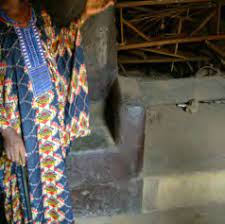
It is an entrance within the Ode igbejo courtyard; an entrance that leads to the apartment where the chief resides. Customarily, the newly installed chief must pass through ona odi to
his private apartment called Adodo and he must not step his feet on it again until when he is in “state” (when he is dead). In order not to mistakenly or unconsciously tread this path, woods are fully stacked in the ona idi to prevent any calamity.
Ode Obinrin– is third courtyard, the women’s apartments. It is one of the restricted areas within the palace. The women courtyard is located at the innermost part of the compound for privacy and security. The courtyard is inhabited by the mothers, children and grown –up daughters. Domestic and daily activities such as cooking, washing, weaving and other local crafts are carried out by the wives but strictly not for trade and ceremony.
The Ode obirin courtyard is designated as cooking area because no separate kitchen is built for the cooking within the compound. It is pertinent therefore to mention the spiritual importance of this courtyard. Any Risawe whose head is consecrated at the Orolejugbe’s shrine; a malevolent deity at Isa obi (malevolent forest) must not eat outside again in his lifetime (this emanated from the commitment of the Risawe to the orisa).
Consequently, the woman (wife) that prepares his meal must also be made to take an oath and vow not to give him Eewo (desecrated food). The woman must not talk while cooking (onje ai fo) and must be naked or half nude (with beads round her waist). For this reason privacy must be ensured and maintained in the women’s courtyard and the place respected.
Ode Ajanpati- is the fourth courtyard between the Ode Igbejo and Ode Obirin’s courtyard.
It is the place where the remains of their ancestors are buried especially their forebears Uyiarere (Bilayiarere) and Gonfiran. The rooms are designated Ile nla; big house because of the respect and regard accorded the departed souls (ancestors). The place is therefore held with awe.
Young women are restricted from this area; it is a taboo and it is believed that if a woman enters there she will remain barren for the rest of her life. Women above menopause could be allowed to enter there freely probably to worship or something. It is considered a sacred room enhanced with supernatural power.

Other interesting places and Shrines
Asides the courtyards, it is pertinent to mention some other important places within the palace .Of a particular interest is the Ile Isanyin the sacred abode of Elefon deity. This is a sealed room without window and door (Iyara ai loju) but with a small opening at the uppermost top of the wall. It is a structure on its own, one cannot really place it within any of the courtyards but it adjoins the women’s harem. Elefon is an Egungun deity that was brought from Ora town, Osun state.
A day after the Uyiarere festival (the ancestral worship that kicks start other Ijesa festival which is usually observed at the tomb of Uyiarere) is the worship of Elefon. The Owa and Risawe perform the ritual at the front of the place a day preceding the proper Egungun
festival.
Sacrifices and prayers are offered for the entire family to protect and strengthen the family, the community and the entire town. The Egungun festival commences the next day and it is a weeklong activity.
According to Chief Risawe his palace is the second largest among the palaces in Ilesa town and what the Owa does he does. The Ile Isanyin is also at the Owa’s palace but the function is not similar to the Risawe’s. The Ile Isanyin in Owa’s palace houses the remains of the deceased Owa.
It is a place where the new king must observe a night vigil on his installation day and this is
perhaps symbolical. Sleeping in this room empowers the new Owa by the ancestors. It is believed that sleeping in this room exposes the new Owa to combined ancestral power forces of the late Owas.
However it is worthy of mentioning the Orolejugbe shrine a small but sacred building at the backyard of the palace. Idowu (1982) stressed that Yoruba do not build magnificent temple for their divinities. The size of Orolejugbe shrine is small and the deity is usually worship by the women of the family; it is perhaps a family shrine.
Ode Odo – this is an open space where social functions are held. Among the social functions that hold every year is the Uyiarere festival. Tents are pitched here for people to sit especially for the entertainment of elders.
The Effects of Modernization on Risawe Palace and Personality
Quite a lot of things remain the same in the architectural structure of the palace, which are probably preserved for cultural and historical purposes but with little modification for development purposes. In the past the Risawe palace extended over an expanse of land but today it has reduced drastically for it has been given out for the construction of roads.

The palace is at the centre surrounded with tarred roads. The thatched roof had been replaced with corrugated iron roofing sheets and the mud walls cemented with cement. The Risawe’s private apartment is called Adodo, the new Adodo is a storey building with modern bricks
cemented and painted.
The women and their children reside in the downstairs while he alone resides upstairs. It is forbidden for any Risawe to live with a woman; it is considered a taboo. His apartment is no longer exclusively reserved for his immediate family as it used to be in the past but for any
visitors he wishes to allow in.
The present Risawe, as an educated elite and a traditionalist was able to separate and distinguish between eewo; taboo and owo; respect. This he successfully achieved as he embraces the pleasant taboos and repulsively neglected the more absurd ones. For example, he did not consecrate his head at the Orolejugbe’s shrine at Isa Obi and this enables him to eat the food that is not prepared in nude or half naked as tradition demands. His wives are
allowed to cook outside and a separate kitchen is built where cooking activities are engaged in without the fear of any implication or result of eewo (taboo).
The Risawe can embrace, hug and shake hands with anybody as he wishes which was regarded as taboo in the past. The act of not talking while preparing his food is perhaps a sign of respect while the nudity could probably be a check to curb the chief from eating publicly.

References
Adepegba C.O, 1995: Nigerian Art: Its Traditions and Modern Tendencies.
Ibadan. Jodad Publishers, p. 60. Blier S.P. (1998): The Royal Arts of Africa: The Majesty of Form. London.
Harry N. Abrams Inc, p. 83.
Denyer, S. (1978): African Traditional Architecture. London. Heinemann Educational Books.
Dmochowski Z.R. (1990): An introduction to Nigerian Traditional /Architecture, London Ethnographical National Commission for Museum and Monuments Vol.iii, Egonwa O.D. (1994): African Art-A contemporary source Book. Benin
OSASU Publishers, p.123.
Fadipe N.A. (1991): The Sociology of the Yoruba. Ibadan. Ibadan University
Press, Pp.160-161. Idowu E.B. (1996): Olodumare (God in Yoruba Belief). Nigeria. Longman, p.131.
Ijisakin Y.O, 2003: Ife Wrought Iron Sculpture: The Silent but Salient
Diviners Staff (Opa Orere). The Journal of Arts and Ideas (J.A.I) Vol.6, p.50.
Johnson, S. (1921): The history of the Yoruba. Lagos. CMS (Nigeria)
Bookshops, p. 17.
Krapf-Askari, E. (1969) Yoruba Towns and Cities: An Enquiry into the
Nature of Urban Social Phenomena. Oxford. Oxford University Press, p.7.
Ojo G.J.A. (1966): Yoruba Palaces: A study of Afins of Yoruba. London.
University of London Press, Pp. 13-21.
Peel J.D.Y. (2002). Ijesas and Nigerians, the Incorporation of a Yoruba
Kingdom. 1890s – 1970s. Cambridge. University Press, Cambridge, Pp. 19-36.
Oral Interviews
Chief Adefioye Adedeji- Chief Risawe of Ijesaland, at his palace on the 26th February 2007 and on 17th and 29th of May 2007. .
Umoru-Oke, Nanashaitu – Department of Fine Arts, Obafemi Awolowo
University, Nigeria. E-mail: umoruokenanashaitu@gmail.com
FOOTNOTE: You want to share story with us? You want to advertise with us? You need publicity for product, or service, or event? Contact us on WhatsApp +2348073463653 or email penpushing@yahoo.com





